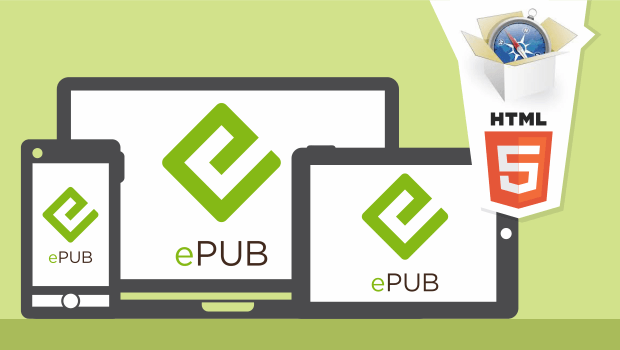Delivering content on single devices is no longer an option. In the true spirit of anytime, anywhere, content is increasingly being designed to run on multiple devices, and many LMSs are adding offline players to make content readily available to learners.
In terms of delivery formats, eLearning materials are now mostly developed as web-based applications and mobile apps. Other formats are also used, but are perhaps less common – among them, eBooks.
eBooks can be read on a wide variety of digital devices including smartphones, tablets, and laptops/desktops, via dedicated eReaders. And with the latest version of the EPUB format – EPUB 3.0.1 – eBooks can be a viable option for the delivery of media-rich multi-device eLearning.
What is EPUB 3?
(or electronic publication) is a distribution and interchange format standard for digital publications and documents published by the International Digital Publishing Forum (IDPF).
How Can EPUB 3 be Used for eLearning?
Let’s take a look at some of the features of the latest EPUB 3 format to see how they allow the creation of multimedia-rich, interactive content.
Multi-device Support – Because EPUB 3 is an XHTML-based file format that uses CSS and JavaScript, it can display a variety of content types and interactivities on different platforms and screen sizes. There are two layout options for eBooks created in EPUB 3:fixed layout and reflow layout. Both layouts can include text, images, static and animated graphics, videos, and audio clips. The choice of layout depends on the aim, intended use, and the nature and treatment of the content.

Accessibility Support– EPUB 3 supports media overlays. This feature can be used to enable a screen reader type of functionality where a pre-recorded audio file is played while corresponding text portions are highlighted in synch with different parts of the audio. Additionally, eBook Readers generally have their own settings to control text formatting – color, font, and size.
Multimedia Support – EPUB 3 supports semantic markup technologies (i.e. HTML5, CSS, MathML) as well as the SVG (Scalable Vector Graphic) format. We can now use tags to include media components like videos and audios into eBooks. This means that eBooks can include conceptual and process animations and software simulations. We can also include custom graphics, as well as complex equations, as the subject requires, without treating them as images that scale up/down based on the device size.
Interactivity Support – Since EPUB 3 supports JavaScript, we can include almost any type of basic eLearning interactivity into eBooks. For example, selecting text or an image/graphic to display text; or selecting marked areas of an image/graphic to display text; or having scored single-select, multi-select, and drag and drop practice questions. Note that these would be more effective in fixed rather than reflow layouts, as default page breaks may hamper the interactivity layout and therefore its functionality.
Multilingual Support – EPUB 3 supports more than left-to-right horizontal scripts. eBooks can now be used where content needs to be distributed in different geographies and/or to audiences with a variety of language preferences, including languages like Arabic, Chinese, Hebrew, and Japanese.
About eReaders:
As mentioned earlier, eBooks launch through eReaders; and, just like browsers, eReaders too have small variations in the way they display content and in the properties that they support. So there may be variations in the pagination, display, and behavior of interactive and media elements based on individual readers.
Based on our research and experience, we found the following eReaders to be effective in terms of consistent layout and functionality:

Additional Considerations:
When evaluating eBooks for learning content distribution, there can be some additional considerations to keep in mind, depending on your needs and requirements:
- EPUB 3 is a free and open standard.
- EPUB 3 allows access to content online as well as offline.
- EPUB 3 allows continuous data tracking through the xAPI (Tin Can) while online. When it comes to offline tracking, however, there are some limitations and inconsistencies. EPUB 3 does support local storage; so data (like score, progress, and other xAPI statement data) can be stored and then passed back to a Learning Record Store (LRS) when connectivity becomes available again. However, there will be a limit to the amount of data that can be stored. There is also a possibility of the data file being emptied or deleted through user action. The efficacy of EPUB 3’s local storage also varies depending on the eReader and device operating system (OS) combination.
- EPUB 3 allows easy distribution of output through Google Play Books, iBooks, and the Windows App Store. However, content updates are more difficult to handle as there is no way to push notifications. Users, on receipt of an eMail or notification in any other format, would need to delete the existing eBook and download the latest version. eBooks may also be less suitable for proprietary content and/or content of a sensitive nature, as anyone who gets hold of the link can download them.
- High-end programming skills are not required for creating simpler eBooks.
References:
EPUBChoosing an eBook format – reflowable or fixed-layout?EPUB3 Now!



















